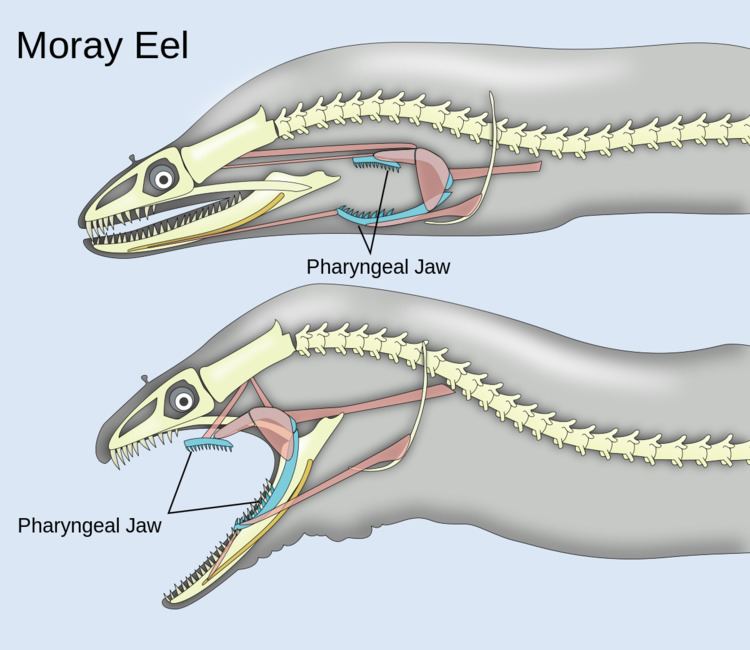 | ||
Pharyngeal jaws are a "second set" of jaws contained within an animal's throat, or pharynx, distinct from the primary or oral jaws. They are believed to have originated as modified gill arches, in much the same way as oral jaws.
Most fish species with pharyngeal teeth do not have extendable pharyngeal jaws. A particularly notable example is the highly mobile pharyngeal jaw of the moray eels. These are possibly a response to their inability to swallow as other fishes do by creating a negative pressure in the mouth, perhaps induced by their restricted environmental niche (burrows). Instead, when the moray bites prey, it first bites normally with its oral jaws, capturing the prey. Immediately thereafter, the pharyngeal jaws are brought forward and bite down on the prey to grip it; they then retract, pulling the prey down the moray eel's gullet, allowing it to be swallowed.
Another notable example are fish from the family Cichlidae. Cichlid pharyngeal jaws have become very specialized in prey processing and may have helped cichlid fishes become one of the most diverse families of vertebrates. However, later studies based on Lake Victoria cichlids suggest that this trait may also become a handicap when competing with other predator species.
Popular culture
The very mobile pharyngeal jaws of moray eels were discovered in 2007 by UC Davis scientists. Almost three decades before (1979), the fictional xenomorph creature from Alien series was first depicted showing a second set of jaws for attacking its prey. At that time, pharyngeal jaws in other fishes were already known, however.
